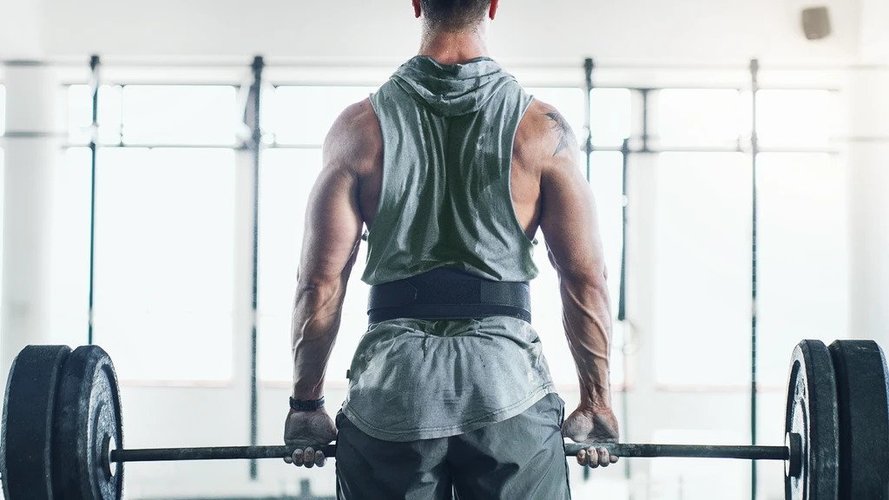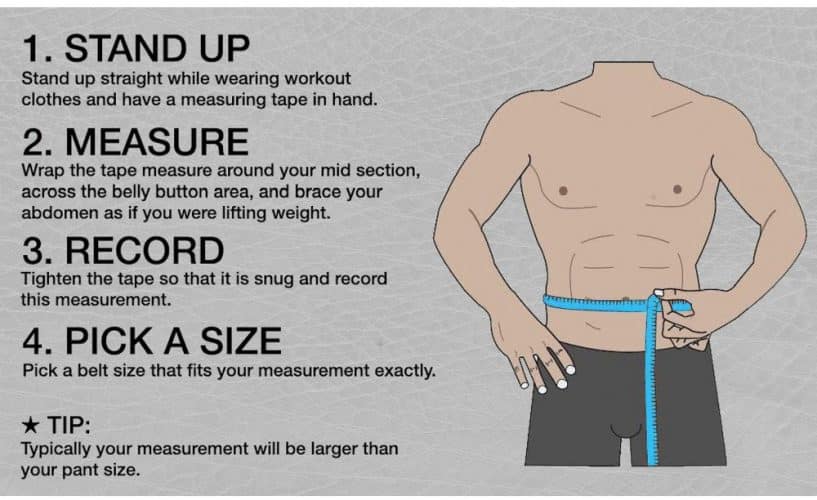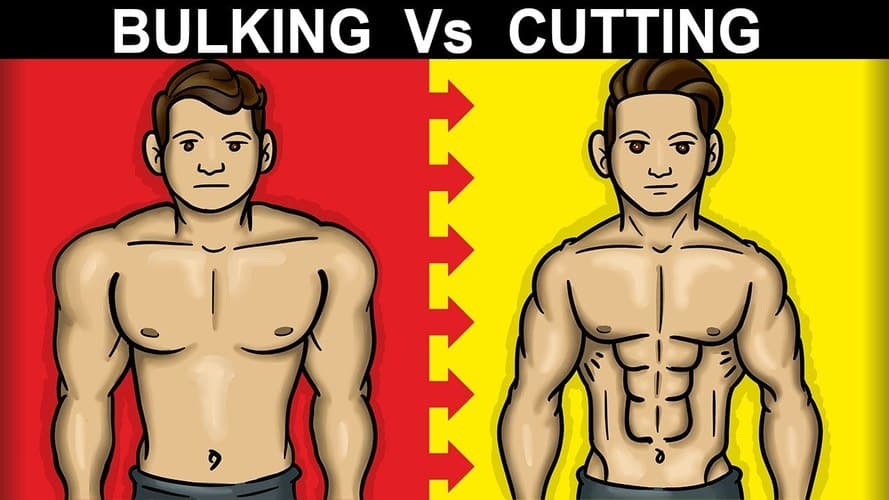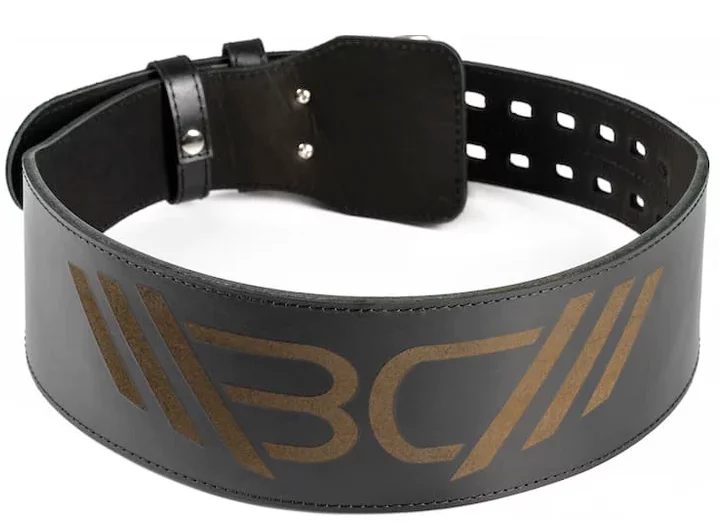Key Points
- In order to measure for a weightlifting belt, you need to measure your waist first. Remember, it’s not the waist size you use for your pants.
- Typically your measurement for a lifting belt will be larger than your pant size (for men)
- Size also depends on your diet phase, height, and the types of exercises you plan to do.
- The same steps for choosing a weightlifting belt apply to choosing a powerlifting belt or lever belt
We’ve all been there before.
You order a piece of clothing online or buy it in-store without trying it on. Then it arrives or you come home… only to find out it doesn’t fit you!
As if this isn’t bad enough, you now must return the item and get the proper sizing which might not be available.
The same can happen when choosing a weightlifting belt or powerlifting belt.
If you don’t measure your size correctly, you might end up disappointed at best, or at the worst, injured!
I know what you’re thinking: what size lifting belt should I get? Why can’t I just choose the same size as my pants? NO. A hard no. If I could shout at you I would.
This belt delivers strong, consistent back support and stability through heavy lifts, and is available in a wide range of sizes.
First of all, if you’re a woman, your pant size will likely have more correlation to your hips than actual waist measurements. And for all genders, wearing a weight belt has a much different purpose than wearing pants, so you need to measure accordingly.
Luckily, you’ve come to the right place. We’ve done the hard work for you. Here is a weightlifting belt sizing guide so you get your measurement right the first time.
I will go into detail on how to measure for the best weightlifting belt or powerlifting belt. I also include some factors you should consider when choosing your belt size. This guide is for both men and women.
Lifting Belt Size Chart – Not All Lifting Belts Are Built the Same
Unfortunately, the problem of sizing for your lifting belt stems from belt companies having different sizing charts. For instance, a lever belt from Inzer has different waist measurements than a weightlifting belt from Iron Bull Strength.
Luckily, we’ve looked at almost all weightlifting belts and powerlifting belts on the market to provide you with a general lifting belt size chart.
- XS: 21-26″
- S: 27-30″
- M: 30-33″
- L: 34-43″
- XL: 44-47″
- XXL: 48-56″
These are based on your waist size, but therein lies the rub. Measuring your waist is no easy task as a weightlifting or Olympic lifter. Let’s get into why sizing a lifting belt is so important.
The Most Important Decision of Your Weightlifting Program
But why is it so crucial?
Imagine you buy your weightlifting or powerlifting belt online. You use your regular pant size. The belt comes to your house and you open the box up like a child on Christmas.
You try to put it on and even at the tightest point, the weightlifting belt is loose.
Now, you don’t want to go through the process of returning it and waiting another few weeks for a new one. So, what do you do? You take your chances. The only problem is this isn’t as bad as a loose belt during a dinner party. This is much worse.

You get to the gym and start off your lifting routine. You warm up to your heaviest set. Put on your oversized belt that just fits because of your shirt layer. Now you go to brace, but you don’t feel pressure pushing back from the belt. You go on to squat despite the lack of core strength. You’re risking your physical well-being and a potentially disabling injury.
Don’t do it. It’s not worth it. I’ve seen countless people in the gym that can’t lift as much as they want, all because of their limitations from a physical injury.
The same is true for a belt that is too tight. If you’re at the biggest setting of your belt and it’s still too tight. Don’t take your chances.
A belt that’s too tight can limit your range of motion and cause you to change your form. What’s worse is that form will almost always be worse and injury-inducing. Not to mention that you could have some difficulty breathing while wearing a tight belt.
Now that you know how serious I am about your weightlifting belt size, let’s go through the weightlifting belt size guide.
How to Measure For a Weightlifting Belt?
Before you determine your weightlifting belt size, you need to measure your waist. This process is the same for both men’s and women’s weightlifting belts.
Use the physical landmarks I recommend to help you find your waist. Also, I would grab a notebook to write out key points for you to remember when it comes time to do this for real.

Step 1
Grab a Measuring Tape or a piece of string long enough to wrap around your abdomen. If you’re trying to track your progress while lifting, a measuring tape is a must-have. I would grab a measuring tape sooner rather than later, but a string is fine.
Step 2
You may need a mirror long enough to see your torso in. If you don’t have a mirror, be sure to keep track of your measuring tape by looking behind you. You can also ask your friend or partner to help you measure if you don’t have a mirror.
Step 3
I would recommend doing the next step without a shirt for most lifters. Only measure with clothing If you’re a strength athlete that likes to wear hoodies and layers to the gym. If this is the case, put on a thick sweater or add 2 inches to your waist measurement.
Step 4
Grab the measuring tape or string and wrap it around your abdomen. Use your navel as a starting point. The tape or string should cover your navel almost completely. Next, try to keep the tape straight and wrap it around your abdomen. For most lifters, this will cross the widest part of your abdomen, your love handles.
Step 5
Once you have the correct position of your string or measuring tape. Relax your breathing. Don’t hold your breath or tuck in your tummy. Don’t force your abdomen out either. You’re trying to get an accurate reading while relaxed.
Step 6
Don’t tighten the tape or string too much. Only enough to feel the tape wrapping around you. If you’re using a measuring tape, use this number as your waist size.
For those of you that are using a piece of string, use a pen to mark where the string meets around. Use a ruler to measure the size of the string and that is your waist measurement. You’re done!
You’ve successfully measured your waist for the most suitable weightlifting belt size. Finally, before you go out and buy your weightlifting belt, consider some of the important factors below.
Weightlifting Belt – Will You Be Bulking or Cutting?
Some of you lifters may be looking to lose some fat. But what does that mean for your weightlifting belt size? I would consider how much weight you plan to lose over the course of your cut. A program where you lose more than 30 lbs.
What if you’re losing more than 50 lbs?
Many powerlifters in the world have a gut and still wear a belt safely. You may have to buy one belt while you’re cutting and another after you lose all the weight. The other option I would consider is, to wait.
Lose some fat and focus on technique with core stability for your heavy lifts. Shopping for a weightlifting belt will be a lot easier after you get closer to your goal weight. You can also check out our guide on belts for big and tall lifters.

Likewise, if you’re looking to bulk while lifting you should consider how much weight you plan to gain. Although there are different types of bulking, any program will result in some fat gain. If you are bulking quickly and plan to gain 20+ pounds in a few months, you should choose the next size category.
For instance, you measure and your waist is 36 inches. This measurement is either small or medium depending on the weightlifting belt.
If it’s small but right on the higher end of the size (i.e., Small-27-36”), you should get a medium since your waist will grow. Luckily, most belts have an overlap between sizes. So, getting one higher will still allow you to fit properly before bulking.
Finally, what size Lifting Belt should I get?
Once you have your proper waist size measured using the steps mentioned above and considered the suggested factors, you’re ready to choose your weightlifting belt.
Different fitness companies have different belt sizing charts. For instance, the Inzer Belt sizing chart puts medium as a waist size of 30 to 33 inches. Whereas, the RDX weightlifting belt sizing chart has medium as 28 inches to 32 inches.
Things to Know
- Typically your measurement will be larger than your pant size.
- Don’t forget to add 2 inches for your layers if you wear thick gym clothes.
- If you are bulking quickly and plan to gain 20+ pounds in a few months, you should choose the next size category.
- If your goal is to lose weight, you may have to buy one belt while you’re cutting and another after you lose all the weight.
What Size Powerlifting Belt Do I Need?
Powerlifting belts are like weightlifting belts. As we talk about in our comparison of the two types, the powerlifting kind has certain standards. The type of belt you want doesn’t change the powerlifting belt size or weightlifting belt size.
To measure for a powerlifting belt, follow the same steps as you would with a weightlifting belt. Get a measuring tape to wrap around your abdomen. Measure around the navel while relaxed. Use that as your size.
What Size Lever Belt Should I Get?
Lever belts are a bit more organized in their sizing guides. This is most likely because lever belts are reserved for heavier lifting and stronger brands.
For lever belts, you can follow the same steps and abide by the general rule of thumb to go bigger as your torso will expand.
Weightlifting Belts vs Powerlifting Belts – Which is the Best?
Final Thoughts
I hope this belt size guide proved helpful for you. There are many factors to consider when buying a weightlifting belt, but we can help. This sizing guide shows how easily you can measure for your weightlifting belt size and how important it is for your safety.
Once you have your perfect lifting belt, check out our very helpful guide about how to properly wear a weightlifting belt.
If you have any questions, let us know in the comments below!
Need more help with weightlifting belts and powerlifting belts? Check these out:






